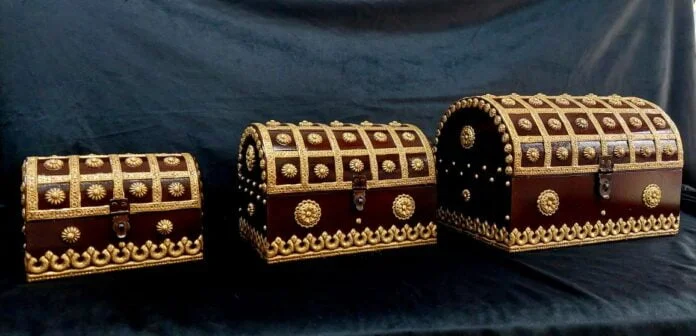Rajasthani Handicrafts: Introduction
Rajasthan, the land of royal palaces, vibrant festivals, and rich cultural heritage, is also celebrated for exquisite Rajasthani Handicrafts. For centuries, the artisans of Rajasthan have been crafting magnificent pieces of art that reflect the state’s royal history and cultural diversity. Rajasthani handicrafts are not merely objects; they are a testimony to the skill, creativity, and dedication of the artisans who continue to preserve and promote this rich tradition.
The Diverse World of Rajasthani Handicrafts
Rajasthani handicrafts encompass a wide spectrum of artistic forms, each rooted in the region’s history and culture. Let’s explore some of the most renowned types of Rajasthani handicrafts:
- Blue Pottery: Jaipur, the capital of Rajasthan, is famous for its stunning blue pottery. This unique craft involves the use of a distinctive blue and white glaze to create decorative items such as vases, tiles, and plates. The intricate floral and geometric patterns give these pieces a royal charm.
- Block Printing: The art of block printing has been thriving in Rajasthan for centuries. Skilled artisans use wooden blocks to create intricate patterns on fabrics, resulting in beautiful textiles like sarees, bedspreads, and scarves. The towns of Bagru and Sanganer are renowned for their block-printed textiles.
- Miniature Painting: Rajasthan is also known for its miniature paintings, which depict intricate scenes and stories on small canvases. Artists use vivid colors and fine brushes to create these exquisite works of art, with themes ranging from royal life to mythology.
- Metal Craft: The state is a treasure trove of metal crafts such as brassware, silver jewelry, and lacquer work. The intricate designs, often embellished with semi-precious stones, showcase the mastery of Rajasthani artisans.
- Leather Craft: Jodhpur, the “Sun City” of Rajasthan, is famous for its leather craft, including traditional footwear (juttis) and accessories. The intricate embroidery and vibrant colors make these items unique.
- Carpets and Dhurries: Rajasthan produces some of the most exquisite carpets and dhurries (flat-woven rugs) in India. The skilled weavers in places like Jaipur and Bikaner create carpets with intricate patterns and rich color palettes.
Preservation and Promotion
The rich tradition of Rajasthani handicrafts faces both challenges and opportunities in the modern world. While globalization and technology have opened new markets, they have also led to mass production and the decline of traditional crafts. To address these challenges, various government and non-government organizations have taken initiatives to promote and preserve these crafts:
- Craftsmanship Training: Many NGOs and government programs provide training and skill development opportunities to artisans, ensuring that the knowledge and expertise are passed down to the next generation.
- Marketing and Promotion: Rajasthan Tourism actively promotes the state’s handicrafts through craft fairs, exhibitions, and tourism initiatives. These efforts help artisans reach a wider audience.
- Geographical Indications (GI): Several Rajasthani handicrafts, such as Kota Doria sarees and Jaipur Blue Pottery, have received GI tags. This recognition helps protect the authenticity and uniqueness of these crafts.
- E-commerce: The rise of e-commerce platforms has enabled artisans to sell their products globally, reaching a broader consumer base.
Conclusion
Rajasthani Handicrafts Online are not just products; they are the embodiment of centuries-old traditions, skills, and culture. The artisans of Rajasthan continue to infuse their crafts with creativity and innovation while staying rooted in their heritage. By supporting and appreciating Rajasthani handicrafts, we can help preserve this rich tradition for generations to come.
So, the next time you admire a beautifully crafted piece of Rajasthani art, remember that it is a piece of history, culture, and creativity all rolled into one. Rajasthani handicrafts are not just products; they are the embodiment of centuries-old traditions, skills, and culture. The artisans of Rajasthan continue to infuse their crafts with creativity and innovation while staying rooted in their heritage. By supporting and appreciating Rajasthani handicrafts, we can help preserve this rich tradition for generations to come.

